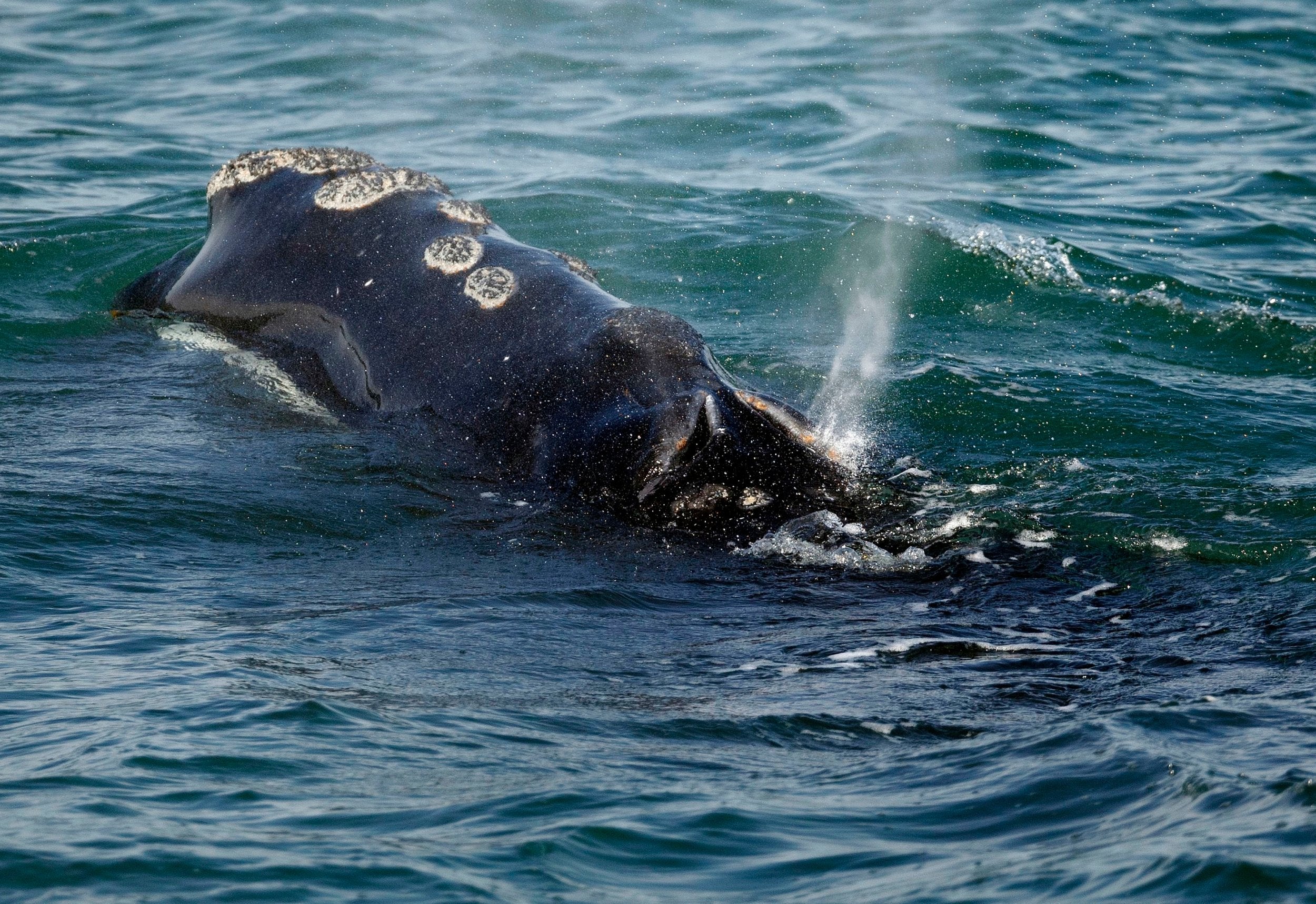Sighting of three newborn right whales raises hopes for species survival after year with no births
Researchers hope to see more than 15 newborns this year as whales battle threat of extinction

In a rare bit of good news for North Atlantic right whales, a third newborn calf was spotted on Thursday, and the breeding season is not half over.
Last year, no new animals were born in a population that spends its calving season along the south-eastern coastline of the United States. Their numbers have declined to 411, according to a soon-to-be-released count for 2018.
“It’s a pause in the bad news,” said Philip Hamilton, who maintains the catalogue of North Atlantic right whales at the New England Aquarium in Boston. “We don’t know how long the pause will be.”
Ideally, he said, he would like to see 15 to 20 newborns before the calving season ends on 31 March, although he admits that seems unlikely.
The latest new mother – known as 1204 – has proved to be a super-breeder. The newborn is her ninth calf, tying her with just two other females in this population. All of 1204’s other calves came regularly, three years apart; this is the first calf she has been seen swimming with in six years, Mr Hamilton said.
That extra time is very concerning to researchers like Mr Hamilton, who has studied the animals for more than three decades. Historically, gestation lasts between 12 to 14 months, and right whale mothers take roughly three years to recover from birthing a calf and nursing it for about a year. But in 2017, a year in which five calves were born, the average time for females between calves was a full decade.
That slower rate of reproduction has become worrisome, since the declining population only includes 90 to 100 females of reproductive age. It is unknown how long right whales can live, but the females do not undergo menopause and so are believed to be able to give birth well into their 60s and 70s.
This year’s other two new mothers last birthed calves three and 10 years ago, said Mr Hamilton, a research scientist with the aquarium’s Anderson Cabot Centre for Ocean Life.
The North Atlantic right whales, one of three right whale populations in the world, are also faring a bit better after a disastrous year in 2017, in which 17 animals were killed by ship strikes or entanglements in fishing gear – five in the United States and 12 in Canada. It was so out of the ordinary that the federal government declared an Unusual Mortality Event.
In response to the deaths, ships in Canadian waters have slowed and shifted their routes, but fishing gear remains a problem, Mr Hamilton said. In 2018, three right whales died in the United States and none in Canada, through mid-October, according to federal data.
Changes in feeding patterns because of warming waters may also be affecting their fertility, Mr Hamilton said. In the last eight years, the whales have been feeding much more in Cape Cod Bay, and less in some other habitats.
“They’re having to search new places to feed,” Mr Hamilton said. “The increased calving interval suggests many are not getting as much food as they need in order to support a calf,” which can cost a mother one-third of her body weight.

To track North Atlantic right whale births, two teams fly over the Atlantic coastline from Savannah, Georgia, to Jacksonville, Florida, every clear-weather day from December through March.
A few weeks ago, looking out of the home they share on the coast, a Florida Fish and Wildlife Conservation Commission worker noticed the first mother of the season swimming with her calf, said Jennifer Jakush, a biological scientist with the commission’s North Atlantic Right Whale Project. That was whale 3317 and she had last given birth three years ago, suggesting that at least some female whales are getting the nutrition they need, Ms Jakush said. “That in and of itself is a good sign,” she added.
The calf born to 1204 was spotted by aircraft during its regular survey, near Amelia Island, north of Jacksonville, Ms Jakush said. The mother had not been seen earlier this season, so it is not clear how old her calf is yet.
Calves measure about 13 to 15 feet at birth, Ms Jakush said – roughly the size of a sedan compared to their school-bus-sized mother – and put on about 100 pounds a day early in life. Mother and baby usually spend a few weeks to a few months in the warmer waters off Florida and Georgia before heading back up to New England and points north, she said.
Calves usually stay with their mothers for nine to 12 months, at which point they are capable of feeding and fending for themselves, Ms Jakush said.
“Every new calf is helping the population as a whole grow and make this recovery back from almost being removed from the planet – every new calf is a contribution away from that, so we all get very excited about that,” Ms Jakush said.
Mr Hamilton emphasised the dangers to right whales, particularly from fishing gear. But he does not want to send a message that this population is doomed, he said, noting the return to births and the decline in accidental deaths.
He said he feels “the seedling of optimism.” But that optimism “needs to be watered and cared for.”
The New York Times
Join our commenting forum
Join thought-provoking conversations, follow other Independent readers and see their replies
Comments
Bookmark popover
Removed from bookmarks